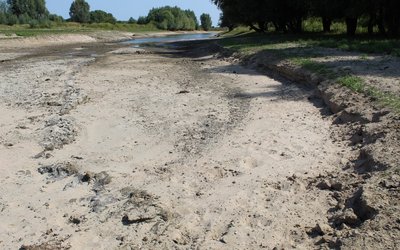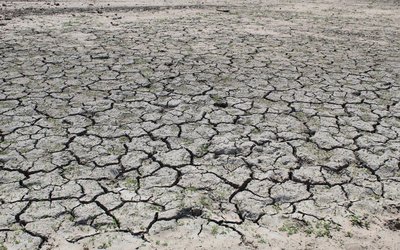What is driving future water scarcity: climate change or population growth?
August 25, 2016

The frequency of droughts will increase in the next several decades, according to several studies. This will probably increase humans’ exposure to water scarcity as well. In addition, population growth or decline may increase or decrease exposure to water scarcity, and these effects may vary from one country to another. What is driving future water scarcity: climate change or population growth?
For the world as a whole and for individual countries, this has been assessed by studying the impacts of (a) population growth, (b) increased incidence of droughts due to climate change, and (c) the combined influence of the two through their interaction. Both a low and high emissions scenario of climate change was assumed (the so-called RCP 4.5 and RCP 8.5 scenarios), and a large number of models were used to adequately cover the spread of uncertainties in the results of different models. For population growth, a medium fertility population growth scenario was assumed (United Nations, 2013), producing a world population of approximately 10.5 billion by the end of the century. Drought was characterized on a monthly basis by calculation the difference between precipitation and potential evapotranspiration for each month in the previous two years and accumulating these differences.
According to this assessment, population growth alone increases the average monthly number of people exposed to extreme drought from 85.5 now to 121.0 million (+35.5 million) at the end of this century (2081 - 2100), worldwide. Climate change alone may increase this number from 85.5 to 315.5 million (+230.0 million) (under the high end scenario of climate change RCP 8.5). Combining population growth and climate change, population exposure reaches 472.3 million (+386.8 million relative to the present). These results show that population growth is responsible for only 9.2 % of the increase in numbers exposed to extreme drought while climate change alone accounts for 59.5 % of the increase. The interaction between climate change and population growth explains the remaining 31.3 % of change in population exposure—reflecting the fact that the growing population tends to be in regions with more frequent droughts.
The results above refer to one scenario of population growth, one scenario of climate change, and the end of this century. These results seem to be robust, however. Similar results are obtained under a higher population growth scenario, under the low-end scenario of climate change (RCP 4.5), and for the middle of the century (2041–2060): climate change plays the primary role.
Similar to the global situation, climate change is the main source of increasing drought exposure in most individual countries. There are exceptions to the rule. In Russia, for instance, substantial population decline will dominate over more droughts under climate change. In Spain, on the other hand, the population decline is being dominated by the impact of climate change.
The exact numbers should not be taken literally given the very large uncertainties in this assessment. Still, the authors conclude that climate change mitigation should be the main policy response in efforts to alleviate numbers exposed to future extreme droughts. Plausible future decreases in population growth will not make a major dent in the very large increase of numbers likely to be exposed to extreme drought through the rest of this century in most parts of the world.
Source: Smirnov et al., 2016. Climatic Change 138: 41–53.
Photo: James Cridland (www.flickr.com)








